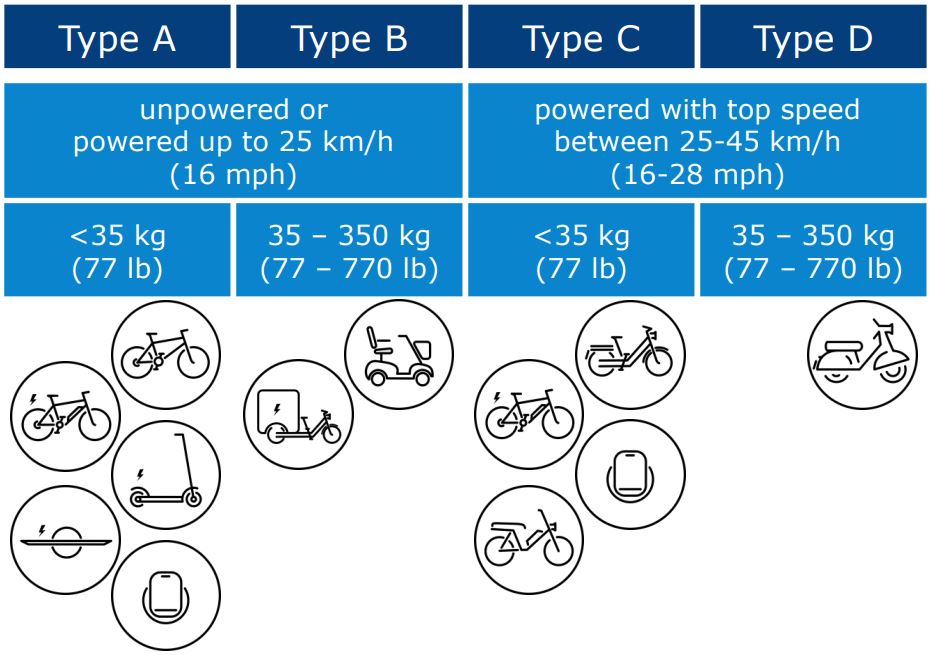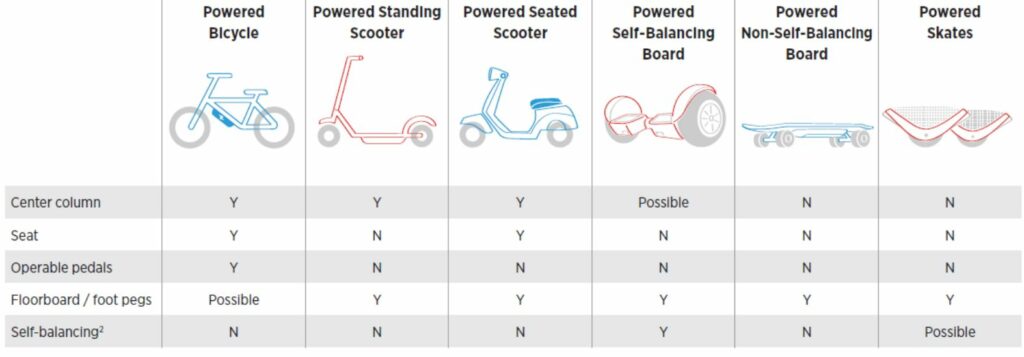Micromobility: what is it?
Micromobility, defined by the International Transport Forum’s Safe Micromobility report, is «the use of vehicles with a mass of less than 350 kg and a design speed equal to or less than 45 km/h».
The report classifies microvehicles into four types based on their speed and mass: Type A microvehicles have a mass of up to 35 kg and their electrical power (if any) is electronically limited, so the vehicle’s speed does not exceed 25 km/h (15,5 mph). Many bicycles, e-bikes, e-scooters and self-balancing devices/vehicles fall into this category. Other types of microvehicles have a higher mass (Type B) or speed (Type C) or both have a higher mass and higher speed (Type D). The following figure distinguishes the typologies.

Source: ITF (2020), Safe Micromobility
The report also presents international vehicle classification systems, namely in Europe, the United States of America, Asia and Latin America.
The Society of Automotive Engineers published the J3194™ standard, which defines powered micromobility as a category of powered vehicles that can be classified according to four main criteria:
- Vehicle weight of up to 227 kg (500 lb);
- Vehicle width of up to 1,5 m (5 feet);
- Top speed of up to 48 km/h (30 mph);
- Power source by an electric motor or a combustion engine.
This standard distinguishes six types of micromotorized vehicles, excluding human-powered vehicles such as conventional bicycles.

Source: ITF (2020), Safe Micromobility
The Society of Automotive Engineers distinguish three classes in e-bikes :
- Class 1: pedal assist (“pedelecs”, “low-speed, pedal-assisted e-bike”);
- Class 2: throttle and demand (“low-speed, throttle-assisted e-bike”);
- Class 3: speed pedelec (“speed pedelec” and “speed pedal-assisted e-bike”).



